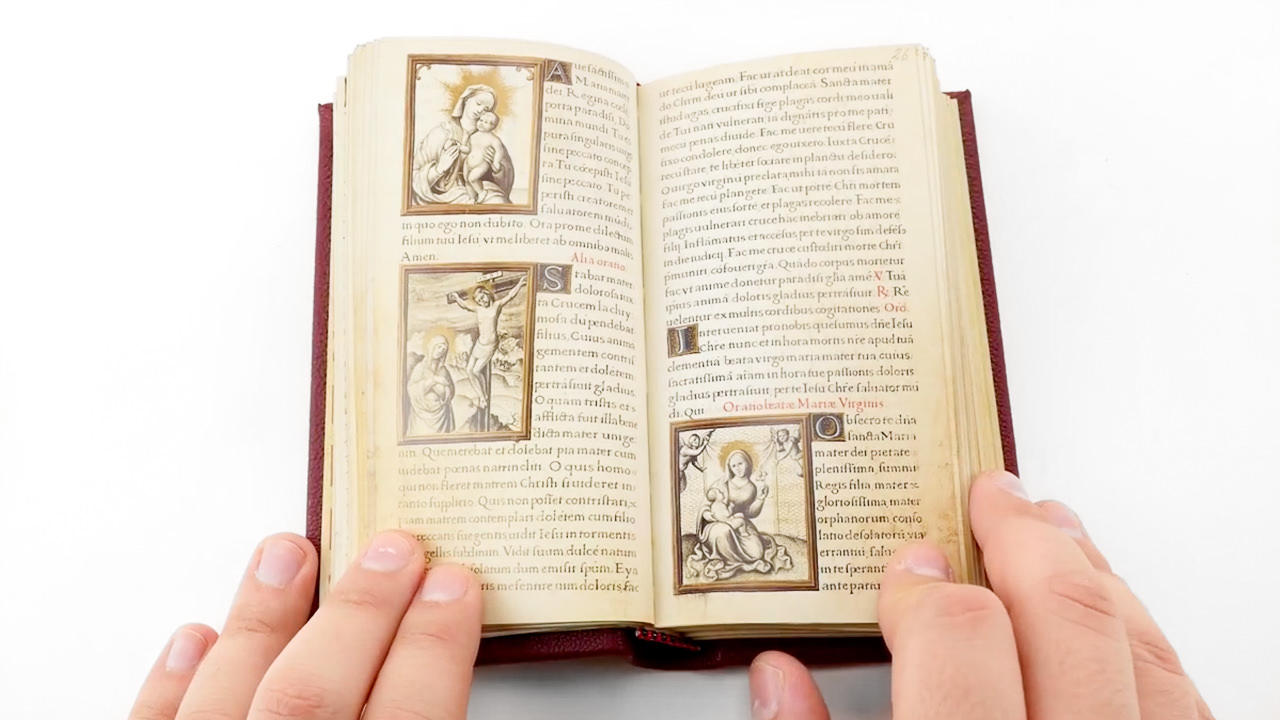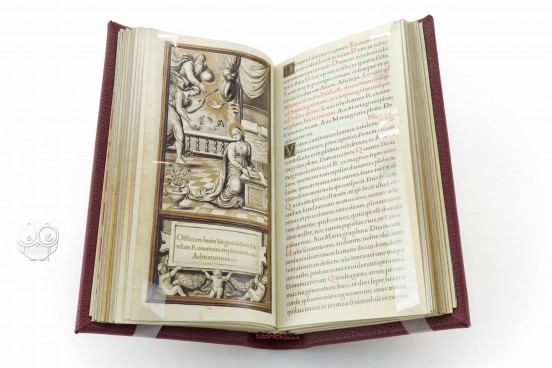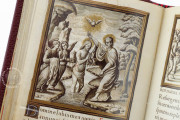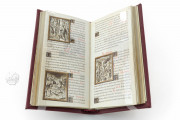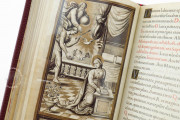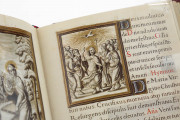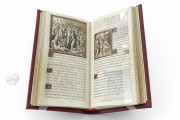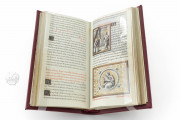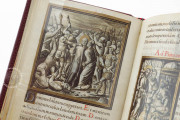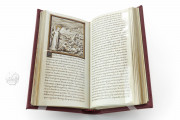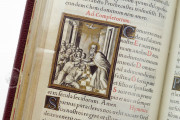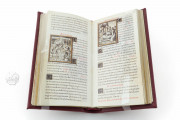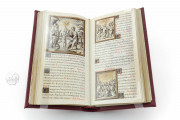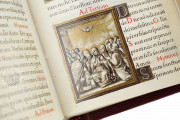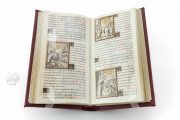The Second—in German "younger"—Prayer Book of Charles V is so named because it is the chronologically later of two prayer books made for Charles V, Holy Roman Emperor, now in the collection of the Österreichische Nationalbibliothek. It was created after 1537 for the first ruler to be described as reigning over a territory on which the sun never set. It is a lavish manuscript, boasting seventy-nine miniatures painted in grisaille—tones of gray—with generous highlights in gold.
Charles's prayer book includes the usual texts of a Christian book of hours greatly enhanced by prayers focused on aspects of the Passion of Christ or addressed to the Virgin Mary and saints.
Full-Page Miniatures at Key Junctures
The manuscript opens with a full-page miniature that serves as a title page (fol. 1r). It features Charles's imposing coat of arms and identifies him as emperor of the Romans and king of Spain. A full-page miniature of the Annunciation to the Virgin serves as a title page for the manuscript's longest text, the Hours of the Virgin (fol. 53v), and a representation of the Old Testament king David in prayer introduces the seven Penitential Psalms and Office of the Dead (fol. 85v).
A Prayer to the Guardian Angel
One of the unusual prayers in the book is addressed to the guardian angel. It is introduced by a miniature of the kneeling emperor, his prayer book open before him, with his guardian angel at his side (fol. 28v). This image is one of four depicting the subject among books owned by the emperor, documenting his attachment to his guardian angel.
Grisaille, Gold, and a Humanistic Script
The subjects and compositions of many of the miniatures in this book are based on those in the First Prayer Book of Charles V. The style and technique are, however, entirely different from the elaborately framed and colorful paintings in the earlier book. Situated in simple fictive wood frames, the miniatures in the later book are rendered in grisaille with highlights in shell gold (i.e., painted gold, as distinct from gold leaf).
The writing is the work of a single scribe except for additions on the book's final pages (fols. 119v-122v). The script is Humanistic Minuscule carefully rendered to look like the typefaces developed in Italy in the early years of printing from moveable type.
Made for Emperor Charles V
In addition to managing the expansion of Hapsburg rule, Charles V was a dedicated patron of the arts and amassed an impressive collection that included many illuminated manuscripts. He not only commissioned manuscripts but actively read them. The small scale of this particular book makes it quite portable so that it could have accompanied him on his travels. The manuscript bears many signs of its use, including the retracing of some of the text where it had rubbed away.
It is unclear who owned the book after Charles's death. It was likely brought to Vienna in 1799, where it was integrated into the Fideikommissbibliothek, a dynastic family library dedicated to the preservation of all things related to the Hapsburg imperial family. That library was integrated into the newly founded Österreichische Nationalbibliothek in 1921.
We have 1 facsimile edition of the manuscript "Second Prayer Book of Charles V": Das jüngere Gebetbuch Kaiser Karls V facsimile edition, published by Akademische Druck- u. Verlagsanstalt (ADEVA), 1993
Request Info / Price
